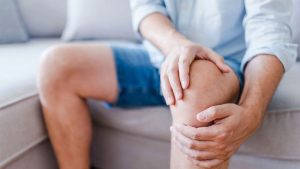You’ve probably heard the term “arthritis” plenty of times and used it yourself any time a joint hurt. After all, finding new and unfamiliar pains is part of the growing old gracefully experience!
But, in reality, a lot of us believe some myths about this condition, especially since it’s generally a catch-all sort of term to describe a condition that causes joint and joint-surrounding tissue pain. If you have this condition or just want to be more informed in case it has an impact on your future or that of a loved one, here are some common arthritis myths debunked.
All arthritis is the same
There is actually more than one type of arthritis, with the two most common being rheumatoid arthritis (RA) and osteoarthritis (OA). RA is an autoimmune disease that causes inflammation and impacts bones, joints and some organs, while OA usually impacts the hip, knee and hand joints. OA is the most common form and can cause disability in older people, while those with RA can lose joint function entirely and suffer other symptoms, including fever and exhaustion.
Those with OA can’t predict the weather
You may already know someone who says they can feel a weather change in their joints. While you may roll your eyes, it’s actually possible.
A study in The Journal of Rheumatology sought to discover whether adults with OA were affected by weather changes (https://pubmed.ncbi.nlm.nih.gov/26329341/). Researchers found that humidity changes–especially when it was colder outside–could boost joint pain. They also noted that other weather changes, including rain and even wind speed, could impact joint discomfort for the OA sufferers.
People with arthritis shouldn’t exercise
In fact, regular exercise is essential for keeping joints strong and as healthy as possible. Both cardio and strength training are considered beneficial for those with RA because these activities can help reduce muscle wasting, which is a symptom of this condition. These exercises are also helpful for those with OA because they can help suppress inflammation and boost joint function, reducing pain.
If you have OA or RA and don’t exercise, start as soon as you can. Start off slow–such as ten minutes of moderate activity a day for four to five days a week–and build yourself up from there as it becomes easier to move. Your doctor can also suggest exercises that will help ease your pain and improve your joints while lowering your risk of injury.




